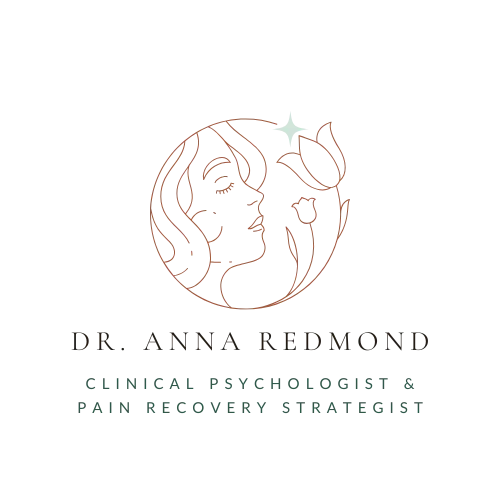Connect with me!
Tell me the number one thing that you want to understand about your pain?

You are wired for survival.
I know you are here because you are READY to LEARN about your brain, body, and how pain works.
If you’ve been following along on instagram, you’ve heard me say it over and over:
You brain and nervous system are always working to decide how safe you are.
As we move through our world, the most essential things that are happening for survival are: looking for rewards and looking to avoid threats. To help us with this, we have several different kinds of threat detection systems in our body. Pain is a wonderful and fascinating threat detection system based on our evolutionary need to survive and avoid threats.
Pain is also a guiding behavior. What do I mean by that? A guiding behavior motivates us to do something. In this case, pain motivates us to take action to keep ourselves safe.
For example, pain keeps us from using our arm when it's broken to pick up a bag of groceries (ouch!). Pain also motivates us to remove our hand from the hot pan that is burning it (thank you pain!).
In order for our threat detection system to work well (and keep us alive), it HAS to be able to do some degree of predicting. If it wasn’t, then we'd be reacting to every perceived threat that we encounter (taxes, family disagreements, work presentation, deadlines, sick kid...) and that is not sustainable for us as humans.
The brain’s job is to predict where the threats are. Prediction is hard, as you know. None of us are sitting here with a crystal ball and the ability to predict the future. Sometimes when we do try to predict, what happens? Well, we can be wrong.
Similarly, our pain prediction system is a best-guess scenario that can be off base sometimes. Here is how this works: the brain is functioning with an internal model of how much pain it is expecting during any given moment or experience. In addition, the brain receives signals from the body all of the time.
So we have the equation that gives us pain:
What brain expects
+ signals from the body
= the experience of pain.
Our brain is the detective in this scenario. It's always trying to figure out what is happening in our world, our bodies, understanding the signals it is receiving. So much of the time our brain is working with limited information. It's that best-guess scenario. This means that sometimes our internal threat detection system is suggesting injury, danger, or threat INACCURATELY.
When these predictions or beliefs about threat are repeated, they can become too strong, resistant to change, and drive a pain cycle of fear and avoidance.
At the center of what drives continued pain, is how threatening we think the pain is.
A high degree of perceived threat drives everything; avoidance, depression, anxiety, distress, and more pain.
When pain is understood to be low threat, we can escape from that loop or cycle of fear, avoidance, and pain.
I know you’re wondering how to lower this level of perceived threat in your body. You’ve taken the first step, actually. By gaining more education and information about pain, you are already lowering how threatening you perceive it to be. Because education is empowering. Eventually, it will empower you to behave differently, think differently, and move differently.
Education provides the power to take the next step in managing your pain. You want to do the things you enjoy (or even basic daily activities) without flaring up your pain. For a limited time, you can grab my free video tutorial to get you started:
3 Simple Steps to a Balanced Day... Without the Flare-Ups.
This free video tutorial is dedicated to helping women with pain begin to find confidence to return to the moments, activities, and people they love the most.
If you love what you're seeing in my journal, I'd love to get some feedback or a testimonial from you. What do you like about them? How have they helped you? You can reach me through DM on instagram or at anna@drannaredmond.com. I'd love to hear from you!
CAN MENOPAUSE CAUSE PAINCHRONIC PAINCHRONIC PAIN CYCLECHRONIC PAIN DEFINITIONCAN FEMALES HANDLE MORE PAINCHRONIC PAIN JOINTSCHRONIC PAIN HELPCHRONIC PAIN MANAGEMENTCHRONIC PAIN NECK AND BACKCHRONIC PAIN RELIEFCHRONIC PAIN RESOURCESBACK PAINCHRONIC PAIN SYMPTOMSCHRONIC PAIN SYNDROMECHRONIC PAIN SUPPORTDEALING WITH CHRONIC PAINCOPING WITH CHRONIC PAINIS CHRONIC PAIN PSYCHOLOGICALLIVING WITH CHRONIC PAINNECK PAINWHEN CHRONIC PAIN BECOMES TOO MUCHCHRONIC PELVIC PAINWOMENS CHRONIC PAINWOMEN AND CHRONIC PAINWOMENS CHRONIC PELVIC PAINWOMAN CHRONIC PAINFIBROMYALGIAALL IN YOUR HEADEXPLAIN PAINHEALING JOURNEYMENOPAUSEMIGRAI
© 2024 | Anna Redmond, LLC | drannaredmond.com
